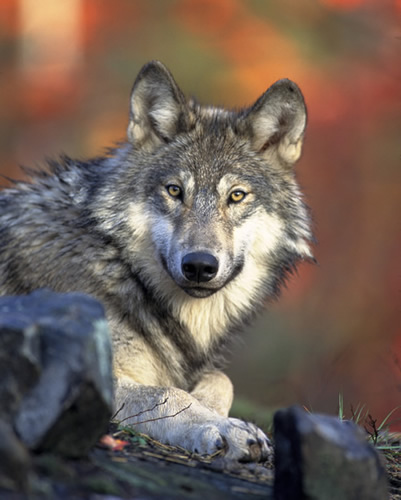Idaho’s Wolf Hunt
By Larry Hyslop

1,000 gray wolves live in Idaho, photo from the U.S.F.W.S.
Idaho is finding out hunting will not manage their wolf population. Two hunts have taken place, during 2009 and 2011, but the numbers of wolves taken have been lower than expected by the Idaho Department of Fish and Game.
This year’s hunt runs from August, 2011 to June, 2012. The hope was to remove 300-400 of the approximately 1,000 wolves living in Idaho. As of November 30, only 147 wolves have been killed by hunters. Most of the state’s 13 wolf zones have no bag limits. Of the five zones with harvest limits, the limits add up to 165 wolves. In these five zones, only 64 wolves have been killed.
Through mid-September, 16,400 wolf tags had been sold, at a cost of $11.50 for residents and $31.75 for non-residents. During November, 1989 more resident tags were sold, along with 492 non-resident tags. Hunters can kill two wolves during the season, but they must report the kill by phone within 72 hours and present the hide and skull to a Fish and Game regional office within 10 days.
The 2009 hunt also netted fewer wolves than was hoped. That year, the entire state had a bag limit of 220 wolves and 188 wolves were killed. Over 30,000 wolf tags were sold, but less than 1% of the tag holders killed a wolf. The Idaho Department of Fish and Game thinks that season probably slowed the wolf population’s growth but did not stop it. They hoped this year’s hunt would involve more experienced hunters bagging more wolves but hunters are finding out that hunting wolves is not an easy task.
This year, another tactic is being tried. Wolves can now be trapped in five northern wolf zones. Trappers can purchase three trapping tags, along with two hunt tags. If the hunt tags are not used for hunting, they can also be used for trapping. Snares and foot-hold traps are legal, traps must be checked every 72 hours and the same reporting time limits are in place. Wolf trapping season began November 1 and during November 134 resident trapping tags were sold, along with eight non-resident trapping tags. It is not known yet how successful trappers will be in reducing the state’s wolf population.
Wolves were re-introduced to Idaho in 1995. The U.S. Fish and Wildlife Service removed wolves from the endangered species list in 2009. After the 2009 hunting season, wolves were again placed on the list but de-listed again this last May. The state must maintain at least 15 breeding pairs or 150 wolves to avoid their being relisted as an endangered species, but keeping enough wolves will not be a problem. The Idaho Department of Fish and Game says if hunting does not remove enough wolves, some may need to be killed by federal Wildlife Services or by Fish and Game personnel.
Elko Daily Free Press, “Nature Notes”, 12/8/2011
© Gray Jay Press, Elko, NV
Return to Elko Nature Notes